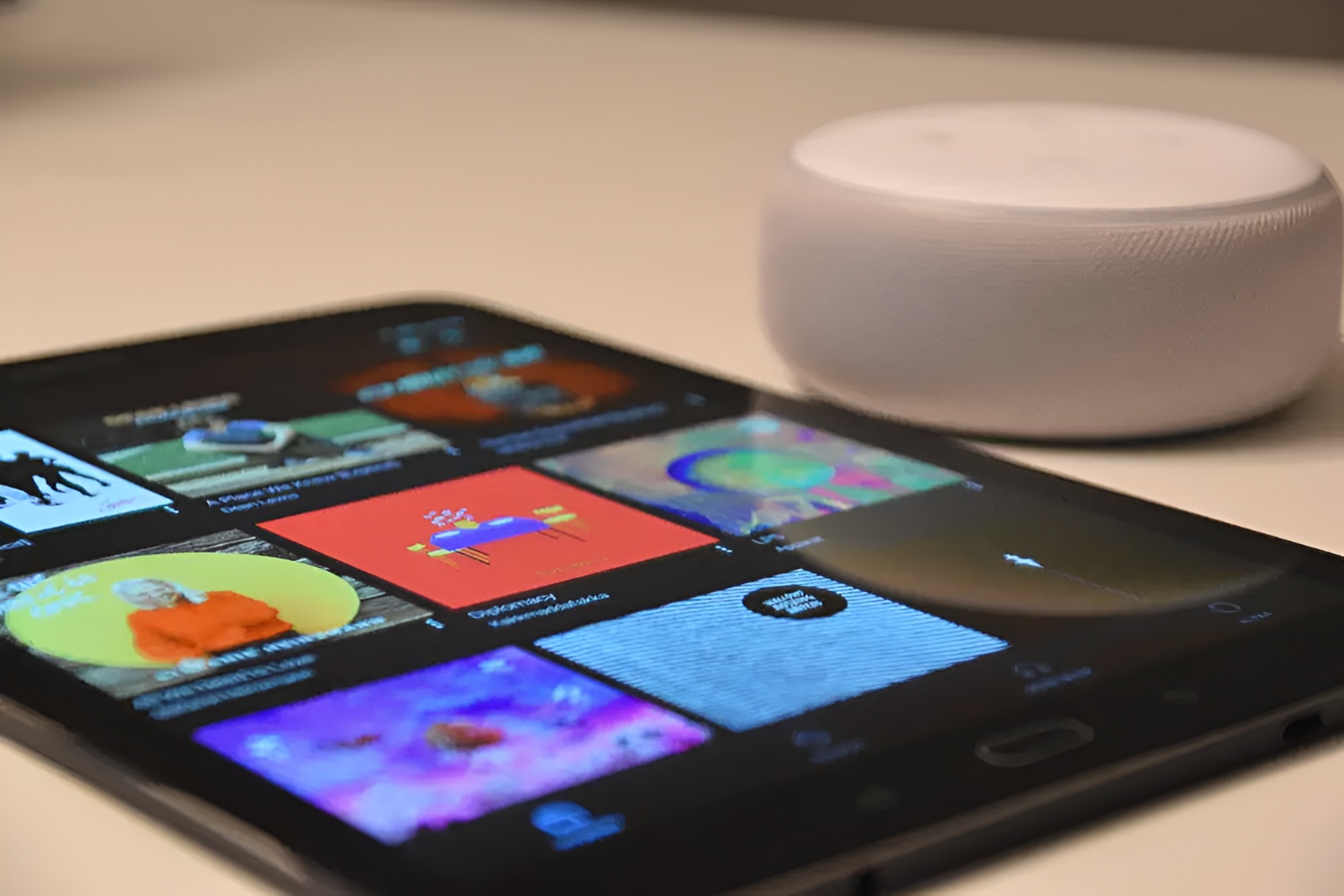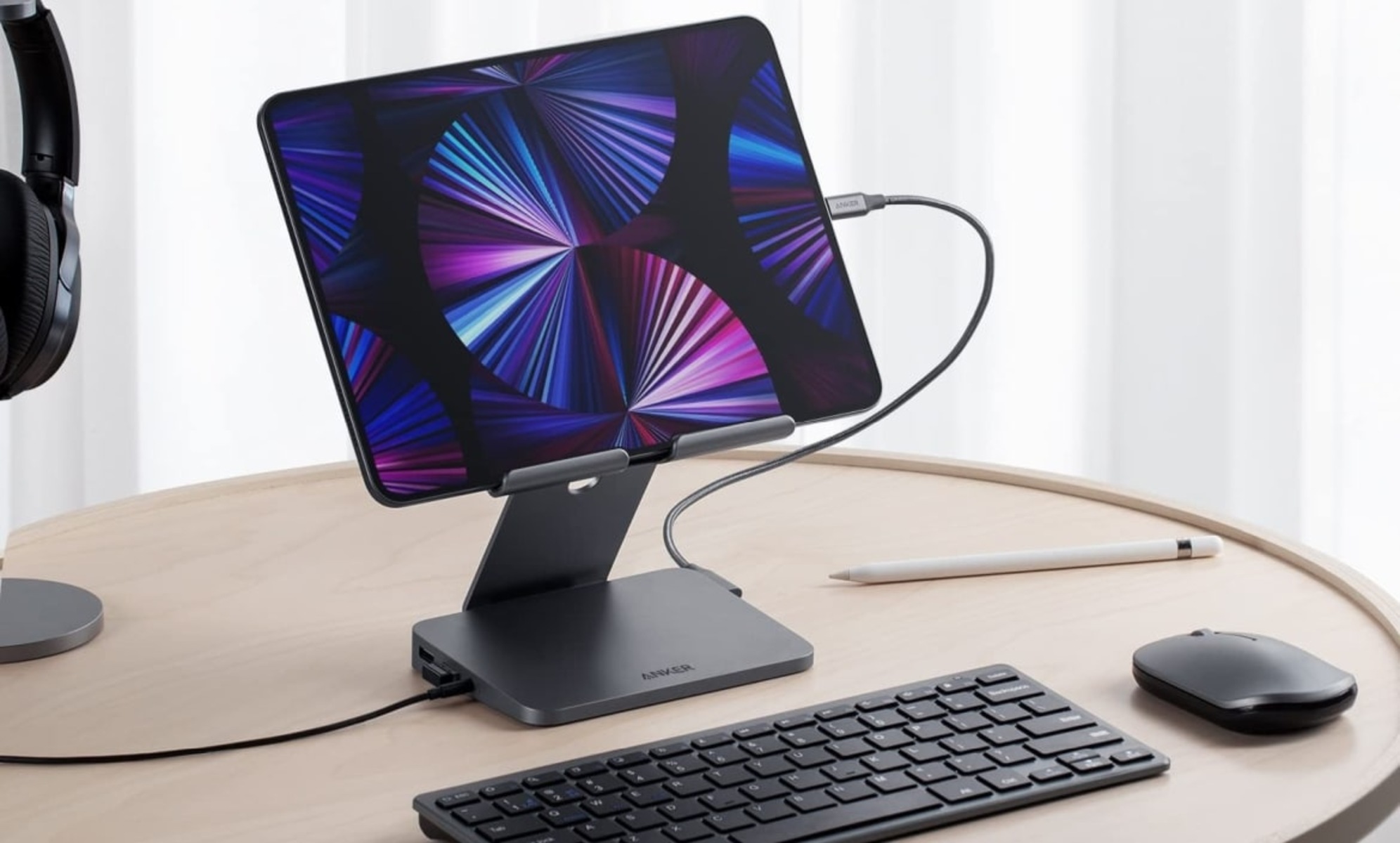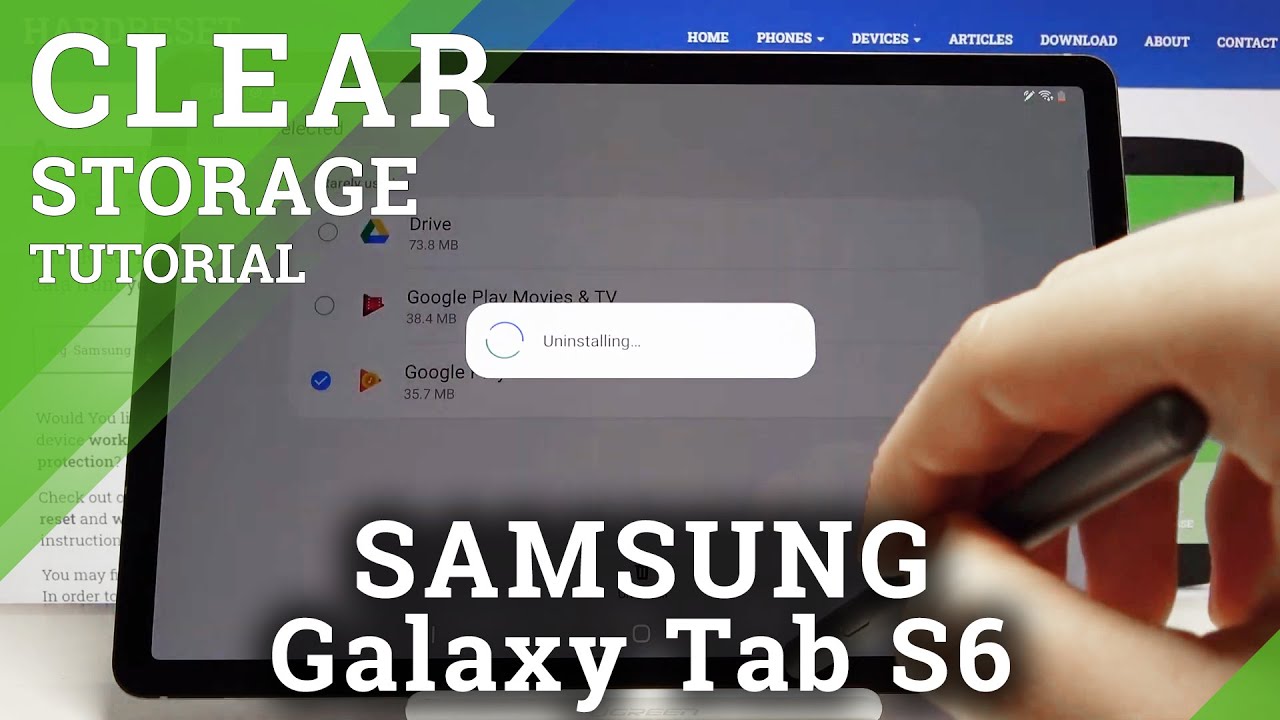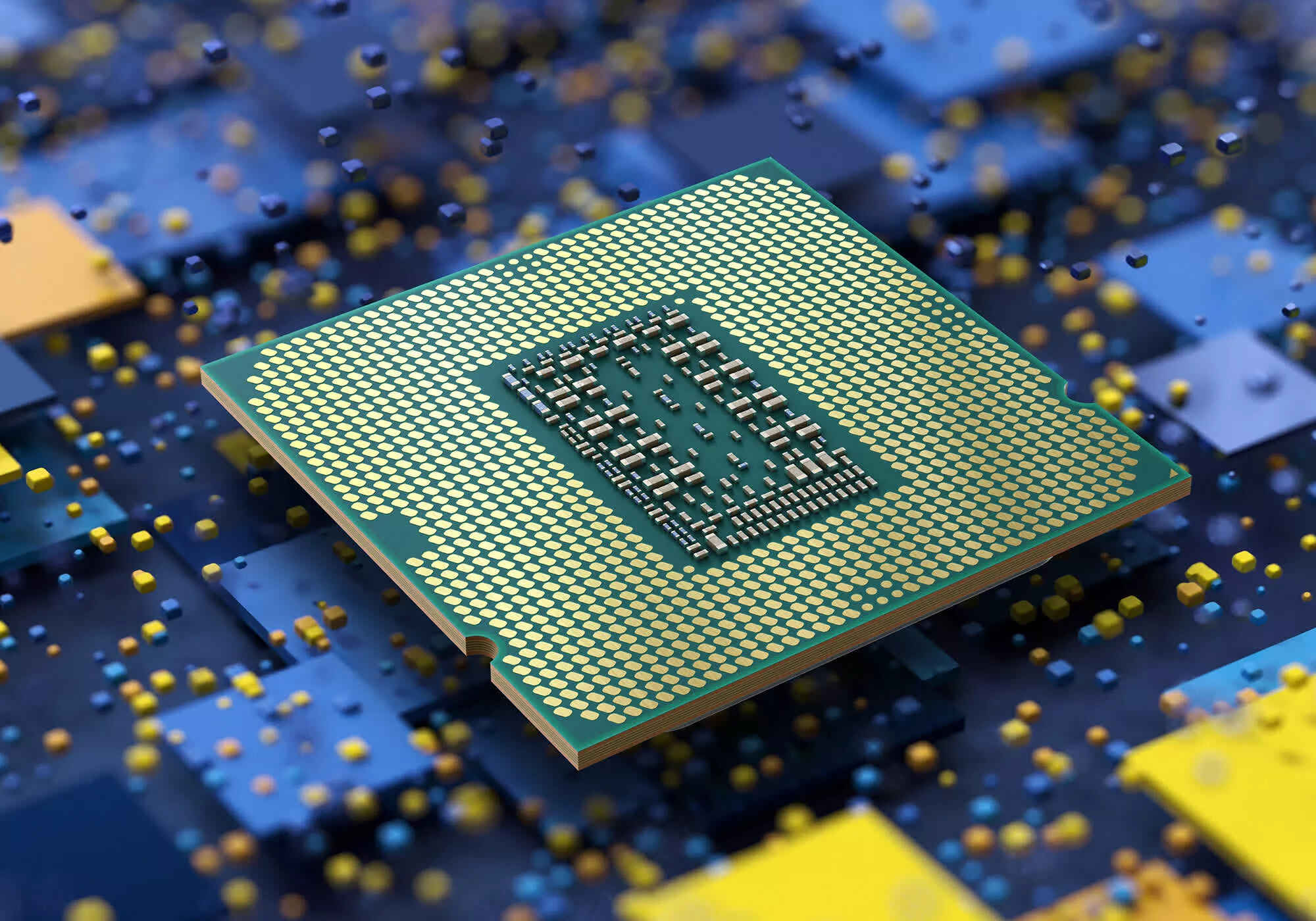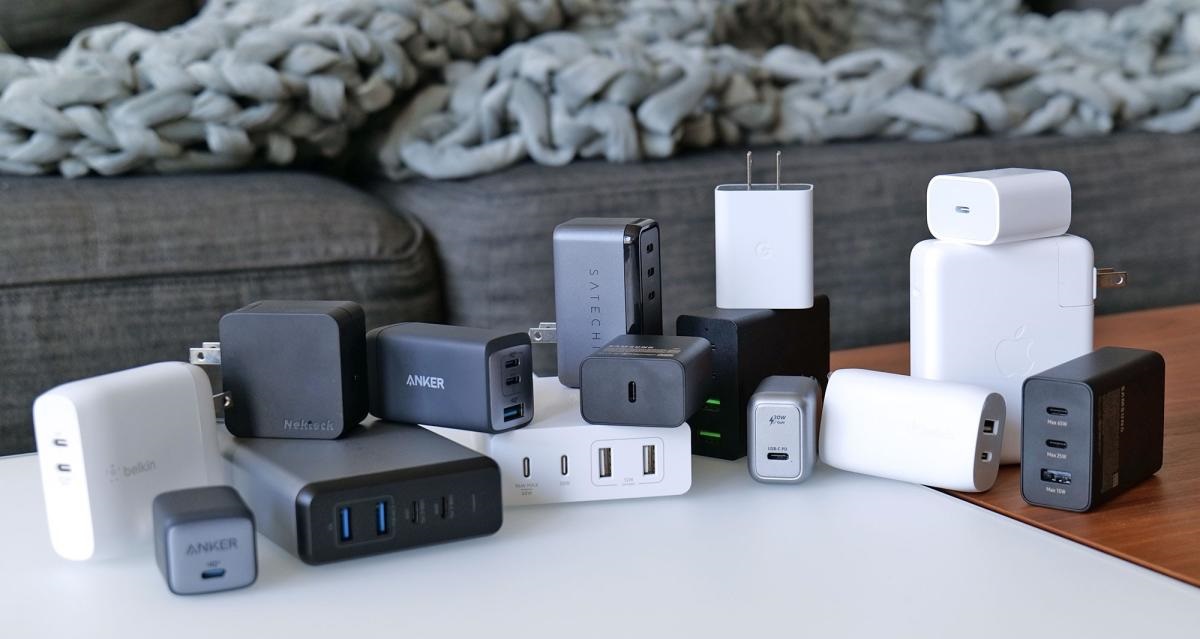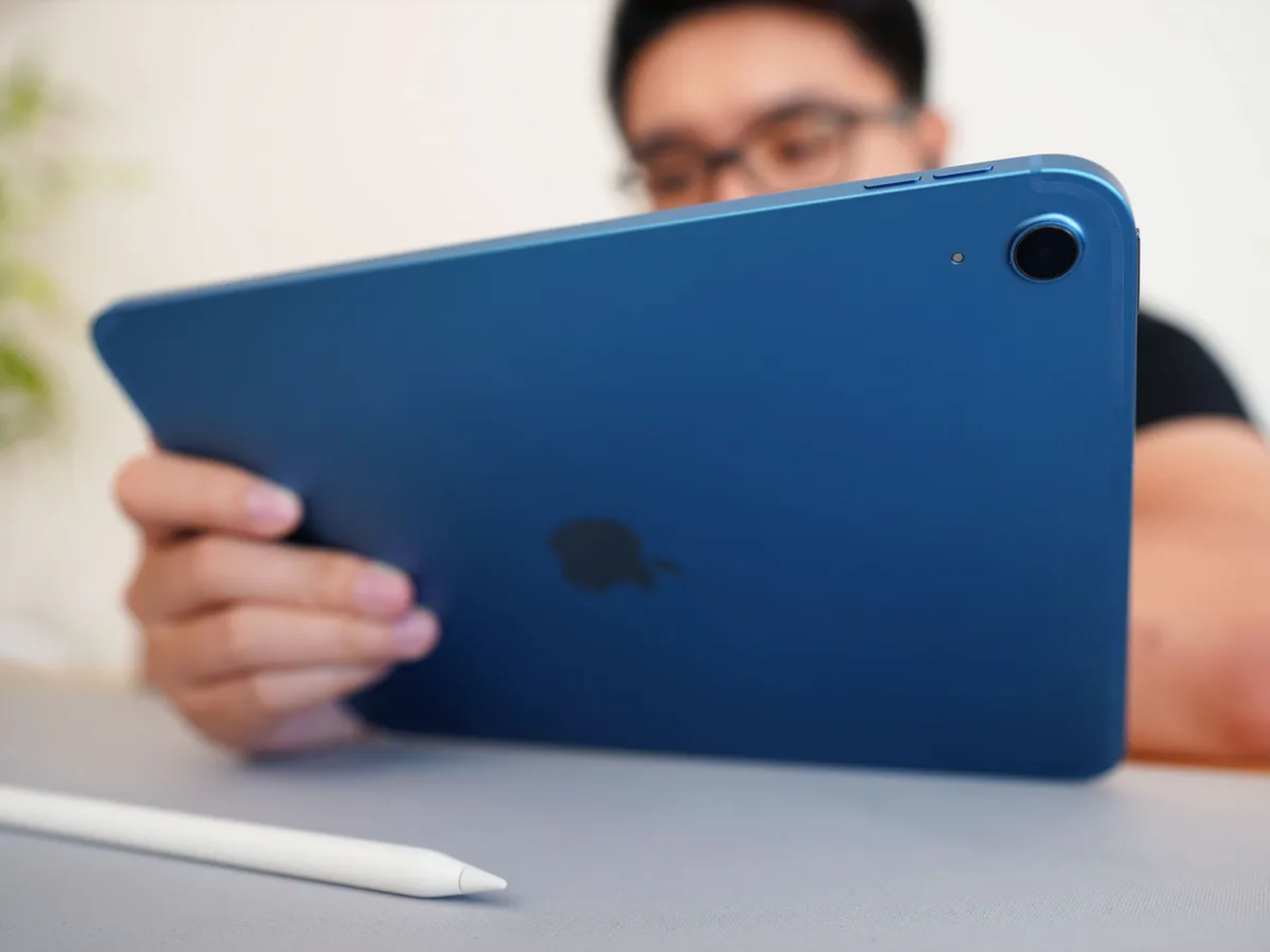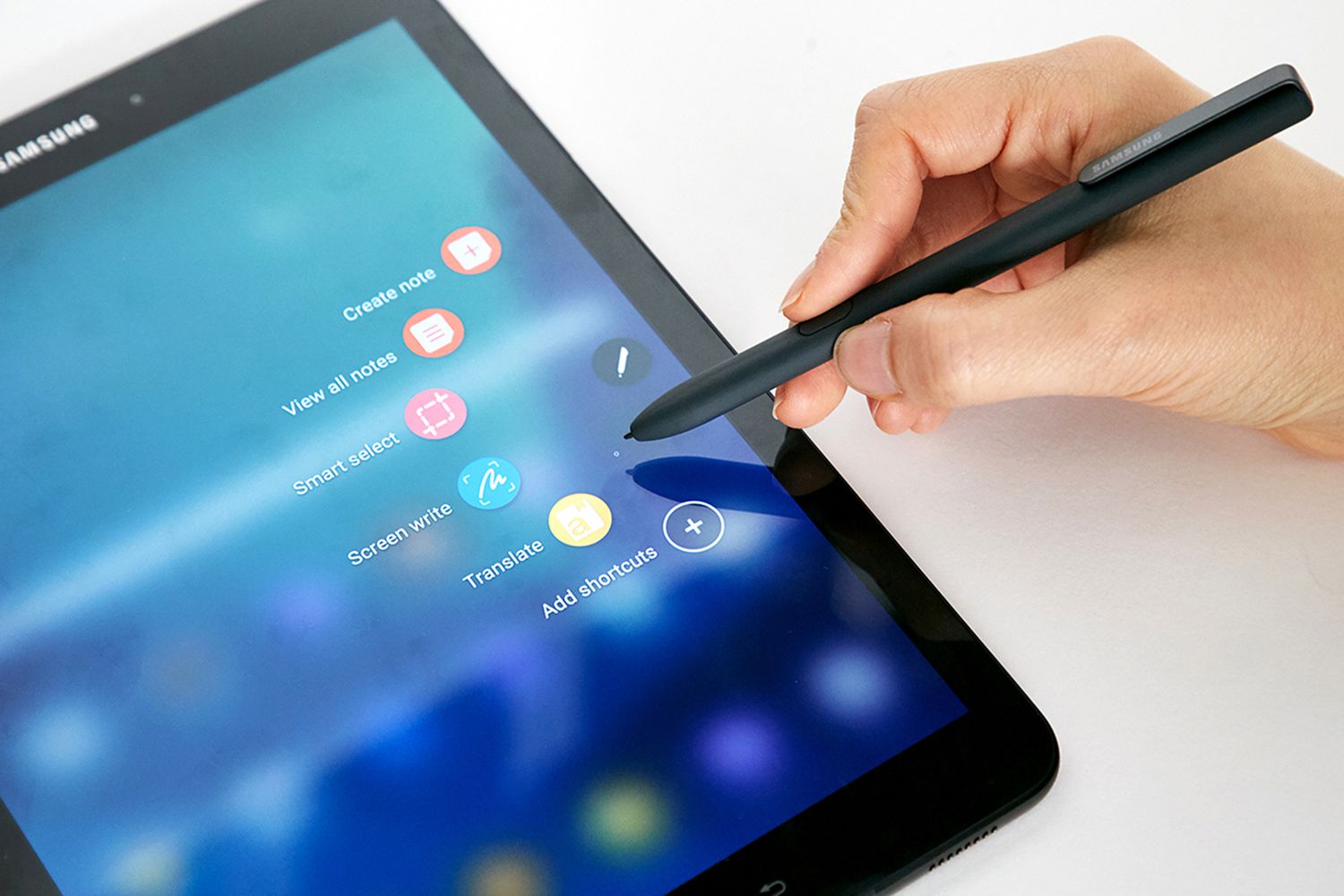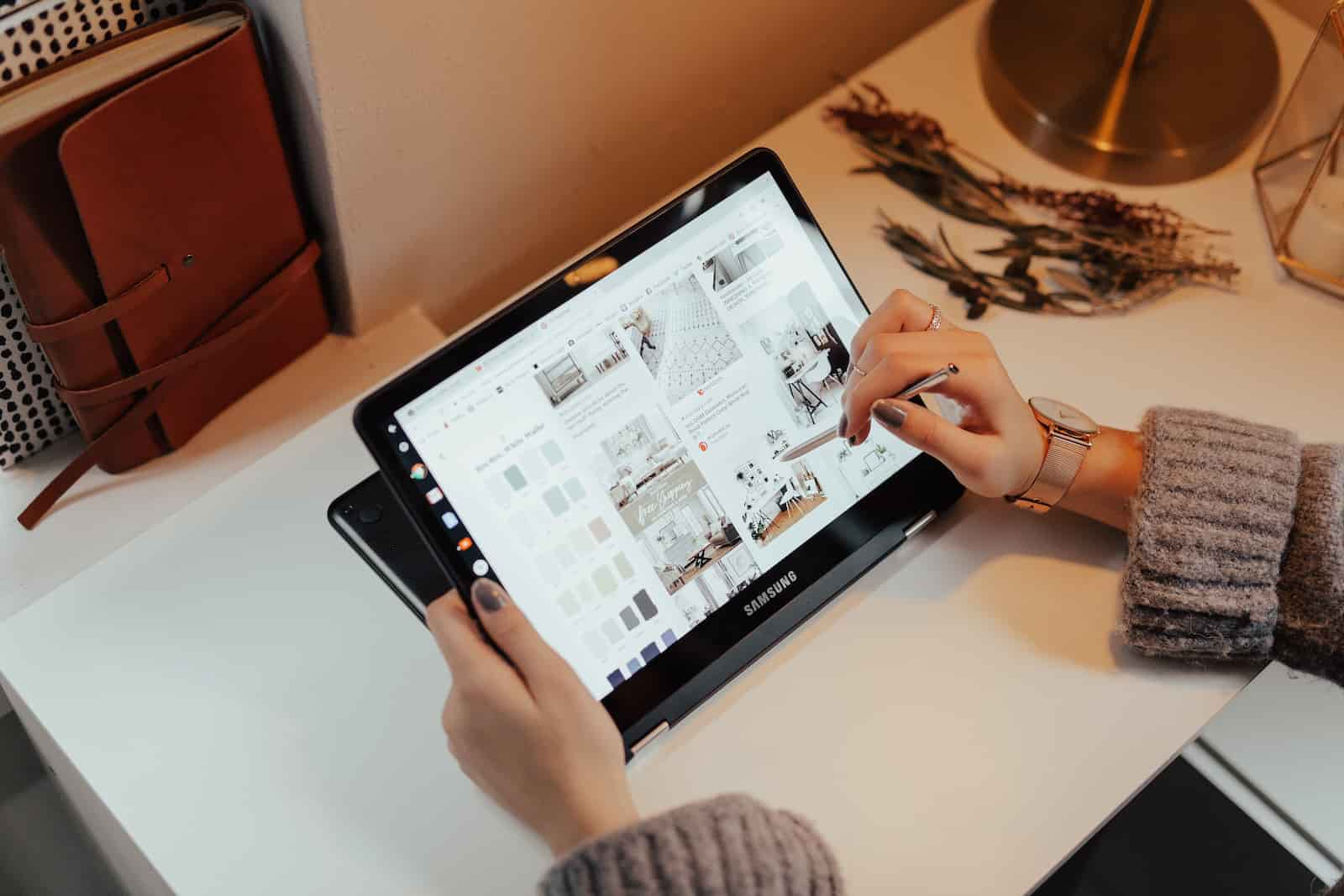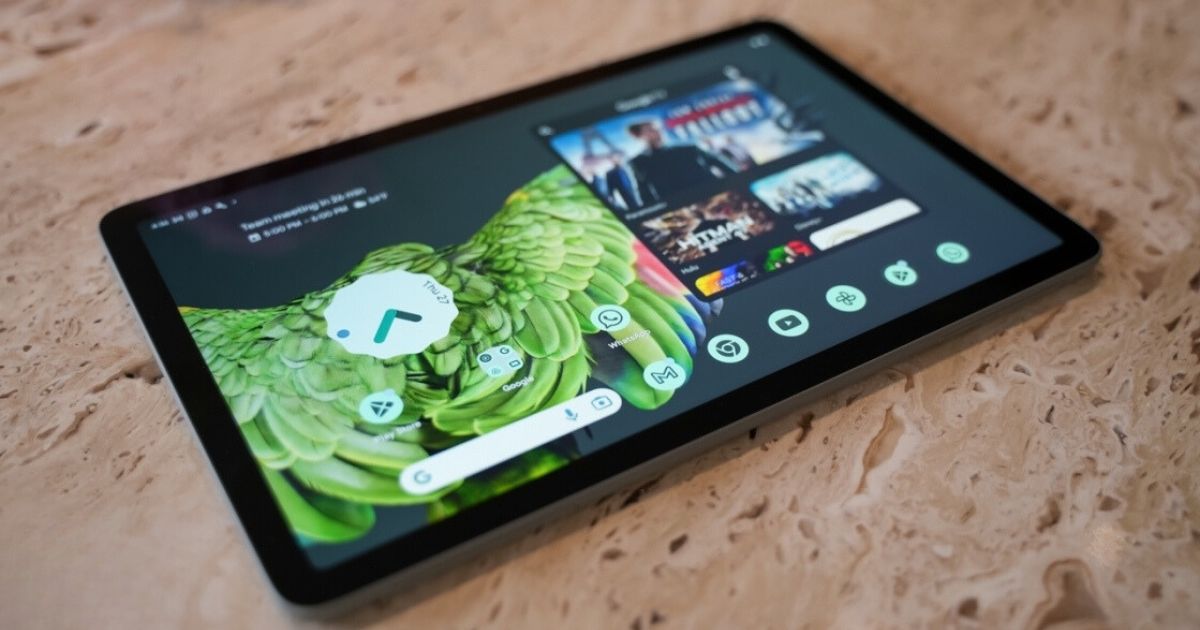Introduction
Welcome to this comprehensive guide on how to make your Samsung tablet faster. Over time, you may notice that your tablet becomes slower and less responsive, which can be frustrating when you’re trying to browse the web, play games, or perform tasks. The good news is that there are several effective strategies you can employ to optimize your tablet’s performance and enhance its speed.
In this guide, we will explore various methods to improve your tablet’s speed and responsiveness. From clearing cache and data to managing storage space, we will cover a range of techniques that will help ensure smooth operation and faster performance. Whether you have an older Samsung tablet or a new model, these tips can help you get the most out of your device.
Please note that while these methods are generally safe and effective, it’s always a good idea to back up your important data before making any changes to your tablet. Additionally, the specific steps may vary slightly depending on the model and operating system version of your Samsung tablet. So, without further ado, let’s dive into the various ways to optimize your tablet’s speed and make it faster!
Clearing Cache and Data
One of the most effective ways to improve the speed and performance of your Samsung tablet is by clearing the cache and data. As you use various apps and browse the web, your tablet stores temporary files and data to help facilitate faster access and provide a smoother user experience. However, over time, these files can accumulate and take up valuable storage space, potentially causing your tablet to slow down.
To clear the cache and data on your Samsung tablet, you can follow these simple steps:
- Go to the “Settings” menu on your tablet.
- Scroll down and tap on “Apps” or “Applications”.
- Select the app you want to clear the cache and data for.
- Tap on “Storage” or “Storage & cache”.
- Here, you will see the option to clear the cache and data for the selected app. Tap on the respective buttons to clear them.
Repeat this process for other apps on your tablet as well. Clearing the cache and data not only frees up storage space but also helps eliminate any temporary files that could be causing performance issues.
It’s important to note that clearing the data of an app will essentially reset it to its default state, deleting any personalized settings or saved data. Therefore, proceed with caution and be mindful of any data loss that may occur.
In addition to clearing individual app caches, you can also use the built-in “Storage” or “Device maintenance” feature on your Samsung tablet to clear the cache for multiple apps simultaneously. This can be found in the “Settings” menu, usually under the “Device Care” or “Storage” section. Simply tap on the option to clear the cache, and your tablet will take care of the rest.
By regularly clearing the cache and data on your Samsung tablet, you can free up storage space and ensure smooth performance, helping to make your device faster and more responsive.
Removing Unnecessary Apps
Another effective way to boost the speed and performance of your Samsung tablet is by removing unnecessary apps. Over time, we tend to accumulate a variety of applications on our devices, many of which we may no longer use or need. These unused apps can take up valuable space on your tablet’s storage and can also run in the background, consuming system resources and contributing to slower performance.
To remove unnecessary apps from your Samsung tablet, follow these simple steps:
- Go to the “Settings” menu on your tablet.
- Scroll down and tap on “Apps” or “Applications”.
- Select the app you want to uninstall.
- Tap on “Uninstall” or “Disable” to remove the app from your device.
Remember to be cautious when uninstalling apps, especially those that are pre-installed or essential for the proper functioning of your tablet. Disabling the app instead of uninstalling it allows you to keep it on your device, but it won’t run in the background or take up additional system resources.
In addition to removing individual apps, you can also use the “Storage” or “Device maintenance” feature on your Samsung tablet to identify and remove apps that are taking up significant storage space. This feature provides a detailed breakdown of app storage usage and allows you to sort apps by size. By identifying and removing large apps that are no longer needed, you can free up space and improve your tablet’s performance.
Removing unnecessary apps not only helps declutter your tablet’s interface but also frees up storage space and reduces the strain on system resources. By keeping your app collection streamlined and minimal, you can enjoy a faster and more efficient tablet experience.
Limiting Background Processes
To optimize your Samsung tablet’s performance and make it faster, it’s important to manage and limit the number of background processes running on your device. Background processes refer to the apps and services that run in the background even when you’re not actively using them. These processes consume system resources such as CPU usage, memory, and battery, which can result in slower overall performance.
Here are some steps you can take to limit background processes on your Samsung tablet:
- Go to the “Settings” menu on your tablet.
- Scroll down and tap on “Developer options”. If you don’t see this option, follow these steps to enable it:
- Go to “Settings”.
- Scroll down and tap on “About tablet”.
- Find the “Build number” and tap on it multiple times until you see a message confirming that developer options have been enabled.
- Tap on “Running services” or “Processes”.
- Here, you will see a list of all the apps and processes running in the background. You can tap on an app/process and select “Stop” or “Force stop” to end its operation.
By stopping unnecessary background processes, you can free up system resources and enhance the performance of your Samsung tablet. However, it’s important to note that some essential system processes should not be stopped or force stopped as they are necessary for the proper functioning of your device. Exercise caution when selecting which processes to stop or force stop.
It’s worth mentioning that you can also limit background processes by controlling the app permissions on your tablet. For example, you can disable the background data access of certain apps, restricting their ability to consume data and resources when running in the background. To manage app permissions, go to the “Settings” menu, select “Apps”, choose the app you want to modify, and then tap on “Permissions”. From there, you can toggle off the background data access for that specific app.
By managing and limiting background processes, you can significantly improve the speed, response time, and overall performance of your Samsung tablet.
Updating System Software
Keeping your Samsung tablet’s system software up to date is crucial for maintaining optimal performance and ensuring the latest security patches and bug fixes. Software updates often include performance enhancements and optimizations that can improve the speed and responsiveness of your tablet. Therefore, it’s essential to regularly check for and install system updates.
Here’s how you can update the system software on your Samsung tablet:
- Go to the “Settings” menu on your tablet.
- Scroll down and tap on “Software update” or “About tablet”.
- Select “Software update” or “System updates”.
- Your tablet will now check for available updates. If an update is available, follow the on-screen instructions to download and install it.
It’s recommended to connect your tablet to a stable Wi-Fi network while downloading and installing system updates, as they can be large in size and may consume a significant amount of data.
In addition to checking for updates manually, you can also enable the “Automatic updates” feature on your Samsung tablet. This will ensure that your device automatically downloads and installs software updates in the background, eliminating the need for manual intervention. To enable automatic updates, go to the “Settings” menu, select “Software update”, and tap on “Download updates automatically” or a similar option.
By regularly updating your Samsung tablet’s system software, you can benefit from the latest performance improvements, bug fixes, and security enhancements. These updates are designed to optimize the overall performance of your device and ensure a smoother and faster user experience.
Managing Storage Space
Running out of storage space on your Samsung tablet can significantly impact its speed and performance. When your tablet’s storage is near capacity, it has less room to work efficiently, which can lead to slower performance, lagging apps, and overall decreased responsiveness. To ensure your tablet operates at its best, it’s important to effectively manage your storage space.
Here are a few tips to help you manage the storage space on your Samsung tablet:
- Remove Unnecessary Files and Apps: Regularly go through your tablet and delete any unnecessary files, such as old photos, videos, or documents. Also, uninstall apps you no longer use or need. This will free up valuable storage space and improve performance.
- Use Cloud Storage: Utilize popular cloud storage services, like Google Drive or Dropbox, to store and access your files. This way, you can keep your tablet’s storage clear while still having your files readily available.
- Transfer Files to an SD Card: If your tablet supports it, consider using an SD card to expand storage capacity. Move files, such as photos, videos, and music, to the SD card to free up space on the internal storage.
- Clear App Caches: As mentioned earlier, clearing app caches can help reclaim storage space. Go to the “Settings” menu, select “Apps”, choose the app, and tap on “Clear cache”. Repeat this process for other apps.
- Manage Downloads: Keep a close eye on your download folder and delete any unnecessary files or documents. This folder can accumulate files over time, taking up valuable storage space.
By actively managing your tablet’s storage space, you can ensure that it has enough room to operate efficiently. This will result in faster performance, smoother multitasking, and an overall improved user experience.
Disabling Animations
Animations can add visual flair to your Samsung tablet, but they can also contribute to slower performance, especially on older devices. Disabling or reducing the animations can help improve the speed and responsiveness of your tablet’s user interface.
Here’s how you can disable or reduce animations on your Samsung tablet:
- Go to the “Settings” menu on your tablet.
- Scroll down and tap on “About tablet” or “Phone information”.
- Locate the “Build number” and tap on it multiple times until you see a notification that developer options are enabled.
- Go back to the “Settings” menu and tap on “Developer options”.
- Scroll down and look for “Window animation scale”, “Transition animation scale”, and “Animator duration scale”.
- By default, these options are set to 1x. You can reduce them to 0.5x or turn them off completely by selecting “Animation off”.
Disabling or reducing animations can make transitions between screens and apps snappier and more responsive. However, keep in mind that disabling animations entirely may result in a less visually appealing user interface.
In addition to disabling system animations, you can also consider disabling or reducing animations within individual apps. Many apps have their own animation settings that you can adjust to optimize performance. Explore the app settings and look for animation-related options to make necessary adjustments.
By disabling or reducing animations on your Samsung tablet, you can potentially enhance its speed and responsiveness, especially if you’re using an older device. Experiment with different animation settings to find the balance between performance and visual appeal that suits your preferences.
Removing Widgets and Live Wallpapers
Widgets and live wallpapers can provide additional functionality and visual appeal to your Samsung tablet’s home screen. However, having too many widgets or using live wallpapers can also impact performance by consuming system resources and draining battery life. Removing or minimizing the use of widgets and live wallpapers can help improve the overall speed and responsiveness of your tablet.
Here are a few steps you can take to manage widgets and live wallpapers on your Samsung tablet:
- Remove Unnecessary Widgets: Assess the widgets on your home screen and remove any that you no longer use or require. Long-press on the widget you want to remove and drag it to the “Remove” or “Delete” option at the top or bottom of the screen.
- Disable Live Wallpapers: If you’re using a live wallpaper, consider disabling it or switching to a static wallpaper. Live wallpapers can consume more system resources compared to static wallpapers, potentially impacting performance.
- Use Minimalistic Widgets: If you still want to use widgets, opt for minimalistic ones that consume fewer resources. Avoid overcrowding your home screen with multiple widgets and choose the ones that provide essential information or functionality.
- Keep Home Screen Clean: Minimize the number of icons and shortcuts on your home screen. Having too many icons can slow down the device, especially when navigating through different screens or launching apps. Organize your apps in folders or move less frequently used ones to the app drawer.
By reducing the use of widgets and live wallpapers, you can free up system resources and improve the performance of your Samsung tablet. This can result in faster app launches, smoother scrolling, and a more responsive user interface.
Remember, it’s important to find the right balance between aesthetics and performance. Customizing your tablet with widgets and live wallpapers can be enjoyable, but it’s essential to prioritize performance optimization for a smoother and more efficient user experience.
Optimizing Battery Usage
Battery life is a crucial aspect of any device, including your Samsung tablet. Optimizing battery usage can not only prolong the time between charges but also improve the overall performance and speed of your tablet. By implementing some effective strategies, you can maximize battery efficiency and enhance the user experience.
Here are some tips to help you optimize battery usage on your Samsung tablet:
- Adjust Screen Brightness: Lowering the screen brightness or enabling auto-brightness can significantly impact battery life. Go to the “Settings” menu, select “Display”, and adjust the brightness slider accordingly.
- Enable Power Saving Mode: Samsung tablets often come with a built-in power-saving mode. Activate it to restrict background data usage, reduce screen brightness, disable animations, and adjust other settings to conserve battery life.
- Manage Connectivity Features: Turn off Wi-Fi, Bluetooth, and GPS when you are not using them as these features consume power when enabled. Use the quick settings panel or go to the “Settings” menu to toggle these options.
- Close Unused Apps: Close apps running in the background when you’re not actively using them. Swipe up from the bottom of the screen or use the dedicated recent apps button to view and close open apps.
- Use Battery Optimization Feature: Samsung tablets have a battery optimization feature that helps enhance battery performance. Go to the “Settings” menu, select “Battery”, and enable battery optimization for individual apps to extend battery life.
- Disable Push Email and Sync: Constantly syncing email accounts and other data in real-time can drain the battery. Consider disabling push email and reducing the frequency of app syncing to conserve power.
- Shorten Auto-Lock Timer: Reducing the auto-lock timer on your tablet can prevent the screen from staying on unnecessarily, conserving battery power. Go to the “Settings” menu, select “Display”, and adjust the auto-lock timer to a shorter duration.
By implementing these battery optimization strategies on your Samsung tablet, you can extend battery life and experience improved performance. Additionally, it’s worth noting that battery usage may vary depending on your usage patterns, specific device model, and installed apps.
Remember, striking a balance between battery optimization and usability is important. Consider adjusting the settings based on your personal preferences and requirements to ensure a satisfactory user experience while maximizing battery efficiency.
Factory Resetting the Tablet
If you’ve tried various optimization techniques and your Samsung tablet is still experiencing performance issues, a factory reset can be an effective last resort. Factory resetting your tablet will wipe all data and settings, returning it to its original factory state. This can help resolve any software-related issues that may be causing slow performance and restore your tablet to its optimal speed.
Before performing a factory reset, it’s crucial to backup all important data, as the process will erase everything on your tablet. Here’s how you can factory reset your Samsung tablet:
- Go to the “Settings” menu on your tablet.
- Scroll down and tap on “General management” or “Backup and reset”.
- Select “Factory data reset” or “Reset”.
- Read the information and warnings displayed, then tap on “Reset phone” or “Reset tablet.
- Enter your password or PIN to confirm the reset.
- Tap on “Delete all” or “Reset” to initiate the factory reset process.
Once the reset process is complete, your tablet will restart, and you can set it up as new. Remember to reinstall your apps and restore your data from the backup you created earlier.
Factory resetting can help eliminate any software conflicts or issues that may be slowing down your tablet. However, it should be considered as a last resort, as it will remove all personal settings and data from your device.
If you are experiencing severe performance issues, frequent crashes, or persistent slowdowns, despite trying other optimization methods, a factory reset could provide a fresh start and potentially resolve the underlying problems.
It’s important to note that after a factory reset, you should take precautions to avoid unnecessary clutter and performance issues. Only reinstall essential apps and carefully manage your tablet’s storage, settings, and updates to prevent the issues from reoccurring.
Conclusion
In this comprehensive guide, we have explored various methods to make your Samsung tablet faster and improve its overall performance. By implementing these strategies, you can optimize your tablet’s speed, responsiveness, and user experience.
We started by highlighting the importance of clearing cache and data, which helps free up storage space and eliminate temporary files that can slow down your tablet. We then discussed the benefits of removing unnecessary apps, which not only declutters your device but also frees up system resources for better performance.
Limiting background processes and updating the system software were also covered as essential steps in improving tablet speed. By managing background processes and keeping your tablet’s software up to date, you can ensure efficient resource allocation and take advantage of performance enhancements.
Additionally, we emphasized the significance of managing storage space to prevent your tablet from becoming overwhelmed. By removing unnecessary files, transferring data to external storage, and organizing your files efficiently, you can optimize storage utilization and enhance overall performance.
We also discussed disabling animations, removing widgets and live wallpapers, and optimizing battery usage, which are effective ways to improve speed and conserve power. By adjusting animation settings, minimizing widgets and live wallpapers, and implementing battery optimization techniques, you can strike a balance between visual appeal and performance efficiency.
Lastly, we explored the option of factory resetting your tablet as a last resort to resolve persistent performance issues. While this process erases all data and settings, it can provide a fresh start and potentially resolve software-related problems.
Remember, each tablet may have unique specifications and features, so adapt these methods to fit your specific device and preferences. Regularly performing these optimizations will help ensure that your Samsung tablet continues to run at its best, providing a fast and enjoyable user experience for years to come.







